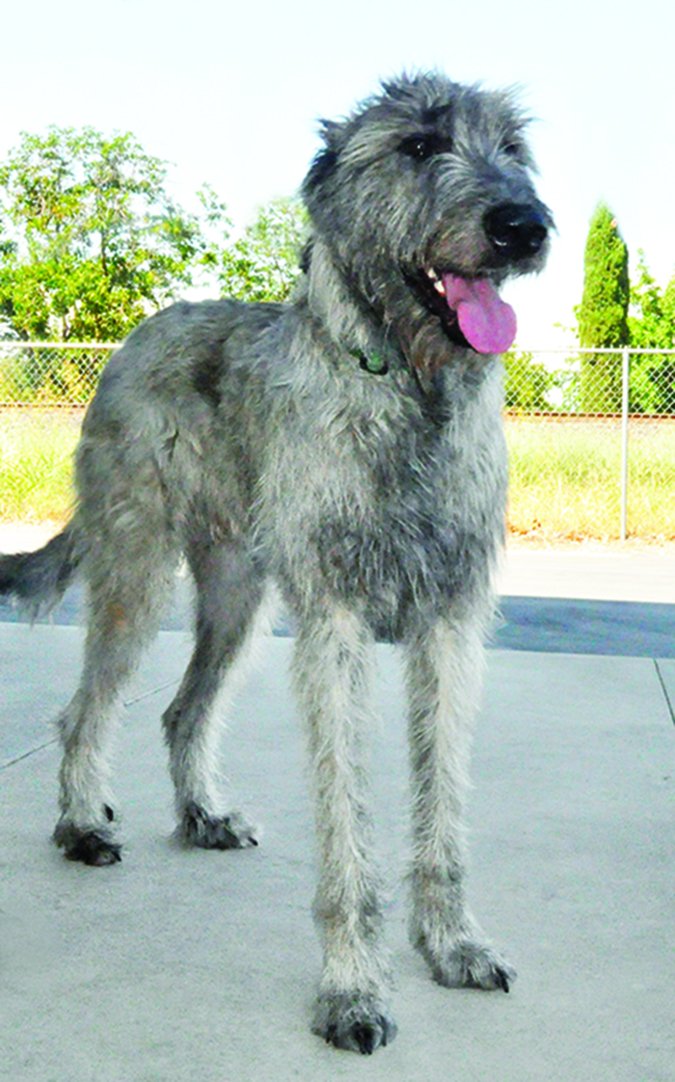You take your happy, healthy puppy for a leisurely stroll in the park. It’s a beautiful day, and everything seems normal. When you get home, though, you notice that your pup seems to be limping a little. Worse, it seems he favors a different leg every time you look at him, plus he’s lethargic and doesn’t want to eat. What could be the problem?
These symptoms describe panosteitis (pronounced “pan-aw-stee-eye-tis”). It may also be referred to as eosinophilic panosteitis (“EoPan” for short), fibrous osteodystrophy, or enostosis. The cause of this disease is not yet understood. Current research points to the possibility that feeding high-protein, high-calorie foods to young, rapidly growing dogs may be related. Panosteitis most commonly occurs in young, fast-growing, large-breed dogs, with German Shepherd Dogs most frequently affected.

Symptoms of panosteitis in dogs can look like other conditions, so a thorough evaluation is needed. Other diseases that can mimic panosteitis include tick-borne illnesses (Lyme disease, Rocky Mountain spotted fever), polyarthropathy (inflamed joints), sprains, and fractures.
Veterinary Examination
The first step is a thorough, nose-to-tail vet examination, including vital signs and most importantly a temperature, since dogs with panosteitis often have a fever. After the initial exam, your vet will watch your dog walk to locate the areas of lameness. With this condition, multiple legs are affected, and your dog may limp on different legs at different times.
After observing your dog walk, the veterinarian should palpate the long bones (the humerus, femur, tibia, fibula, ulna, and radius); these are the areas where panosteitis most commonly occurs. Your veterinarian may insist on a muzzle for this part of the exam. Don’t be offended! It is for the safety of everyone involved, as the pain of panosteitis is severe and can cause an otherwise well-behaved and friendly dog to cry out or bite.
The next step is diagnostic testing. This usually includes bloodwork and x-rays of the legs. Bloodwork is often normal, but in some cases, an increase in eosinophils is noted. Eosinophils are the white blood cells predominantly responsible for fighting off parasites. The cause of this elevation is not known.
Radiogaphs (x-rays) often clinch the diagnosis, but they must be of excellent quality and technique, as the changes can be subtle. Digital x-ray is best, especially since early in the course of the disease, the changes may be difficult to detect. As the disease progresses, a white patchy “haze” will appear in the medulla (center) of the long bones.
There are more complex tests, such bone scintigraphy, that can be done. However, the diagnosis is usually made based on a combination of signalment (age and breed), clinical signs and history, x-rays, and response to treatment.
Tincture of Time (and Pain Meds)
You may feel better once the diagnosis is made, but your dog may not; there is no cure for panosteitis. Generally, with time, the symptoms will resolve, typically around the time of skeletal maturity. It is rare to see this condition in dogs older than about 2½ years, but it can happen. Symptoms can wax and wane over the course of weeks to months. Management involves mostly rest/exercise restriction and aggressive pain control.
The latter is usually accomplished with non-steroidal medications such as carprofen, firocoxib, meloxicam, and similar medications. A newer drug on the market, Galliprant, has similar pain control effects with (theoretically) fewer side effects such as vomiting, diarrhea, and kidney damage. Other medications such as tramadol, gabapentin, and topical patches (lidocaine or fentanyl) may be administered if the pain is not controlled. A comfortable, thickly padded bed can be helpful, too.
Dr. Catherine Ashe is a regular contributor to Whole Dog Journal.







Thank you for sharing, this is good to know since I have 1 year old puppy.
My 2yo German Shepherd died 8 months later from Kidney failure (Chronic) was on Carprofen I could have given him HEEL Traumeel homoeopathics so more effective and no side effects he just turned 3 & 3 weeks died at the vets (different to the prescribing vet) on a drip One year on I am still devastated
Jan, please use punctuation. It’s very hard to understand what you are saying.